3.3E: Graphs of Polynomial Functions (Exercises)
( \newcommand{\kernel}{\mathrm{null}\,}\)
section 3.3 exercise
Find the C and t intercepts of each function.
1. C(t)=2(t−4)(t+1)(t−6)
2. C(t)=3(t+2)(t−3)(t+5)
3. C(t)=4t(t−2)2(t+1)
4. C(t)=2t(t−3)(t+1)2
5. C(t)=2t4−8t3+6t2
6. C(t)=4t4+12t3−40t2
Use your calculator or other graphing technology to solve graphically for the zeros of the function.
7. f(x)=x3−7x2+4x+30
8. g(x)=x3−6x2+x+28
Find the long run behavior of each function as t→∞ and t→−∞
9. h(t)=3(t−5)3(t−3)3(t−2)
10. k(t)=2(t−3)2(t+1)3(t+2)
11. p(t)=−2t(t−1)(3−t)2
12. q(t)=−4t(2−t)(t+1)3
Sketch a graph of each equation.
13. f(x)=(x+3)2(x−2)
14. g(x)=(x+4)(x−1)2
15. h(x)=(x−1)3(x+3)2
16. k(x)=(x−3)3(x−2)2
17. m(x)=−2x(x−1)(x+3)
18. n(x)=−3x(x+2)(x−4)
Solve each inequality.
19. (x−3)(x−2)2>0
20. (x−5)(x+1)2>0
21. (x−1)(x+2)(x−3)<0
22. (x−4)(x+3)(x+6)<0
Find the domain of each function.
23. f(x)=√−42+19x−2x2
24. g(x)=√28−17x−3x2
25. h(x)=√4−5x+x2
26. k(x)=√2+7x+3x2
27. n(x)=√(x−3)(x+2)2
28. m(x)=√(x−1)2(x+3)
29. p(t)=1t2+2t−8
30. q(t)=4x2−4x−5
Write an equation for a polynomial the given features.
31. Degree 3. Zeros at x = -2, x = 1, and x = 3. Vertical intercept at (0, -4)
32. Degree 3. Zeros at x = -5, x = -2, and x = 1. Vertical intercept at (0, 6)
33. Degree 5. Roots of multiplicity 2 at x = 3 and x = 1, and a root of multiplicity 1 at x = -3. Vertical intercept at (0, 9)
34. Degree 4. Root of multiplicity 2 at x = 4, and a roots of multiplicity 1 at x = 1 and x = -2. Vertical intercept at (0, -3)
35. Degree 5. Double zero at x = 1, and triple zero at x = 3. Passes through the point (2, 15)
36. Degree 5. Single zero at x = -2 and x = 3, and triple zero at x = 1. Passes through the point (2, 4)
Write a formula for each polynomial function graphed.
37. 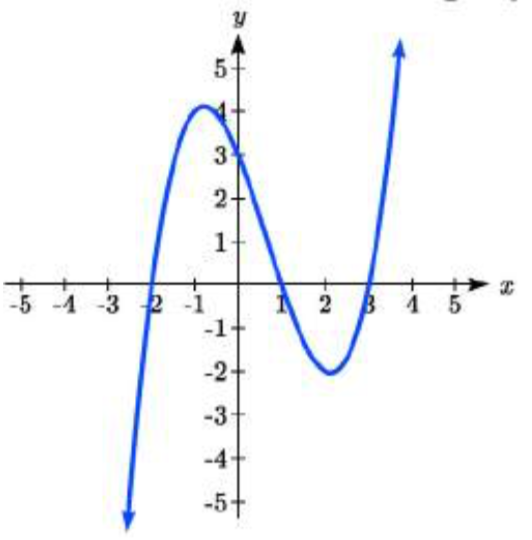 38.
38. 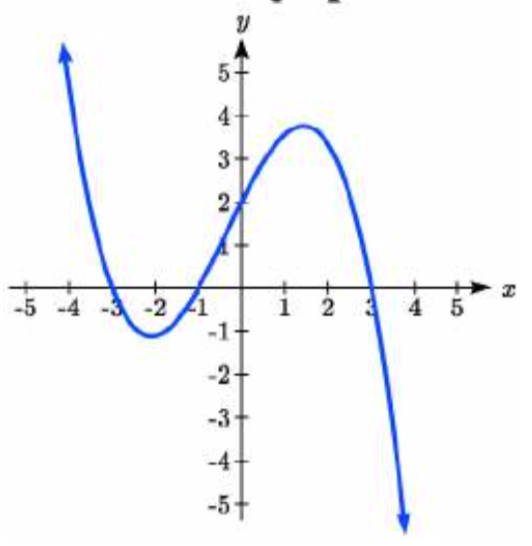 39.
39.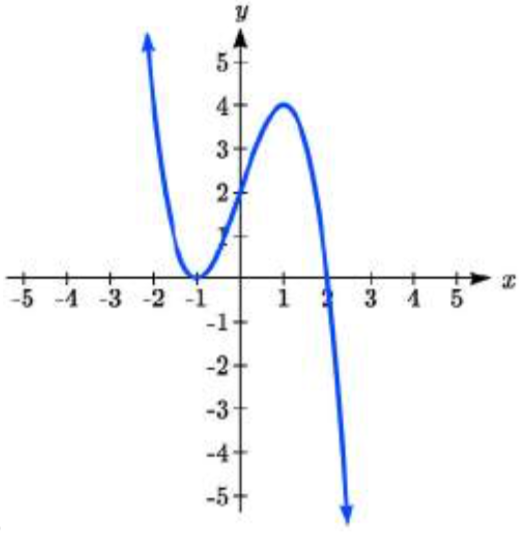
40. 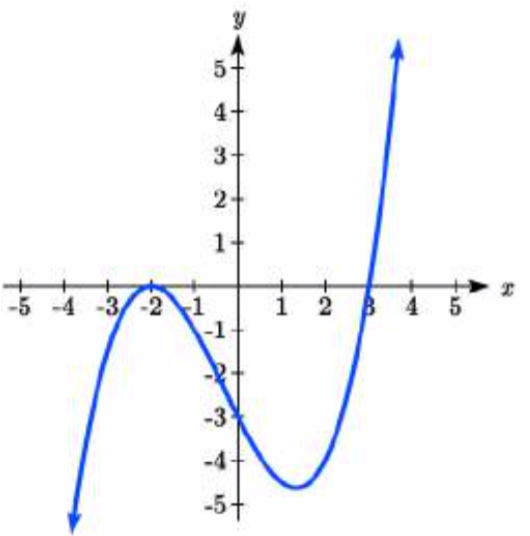 41.
41.  42.
42. 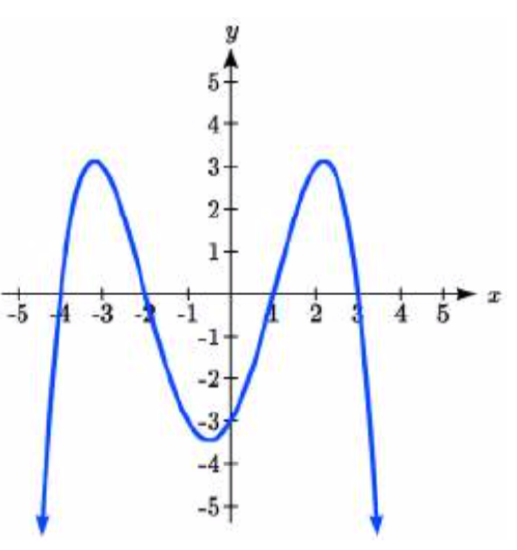
43. 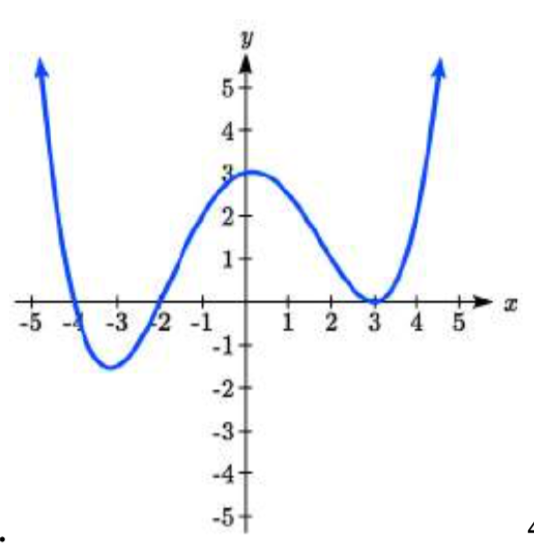 44.
44.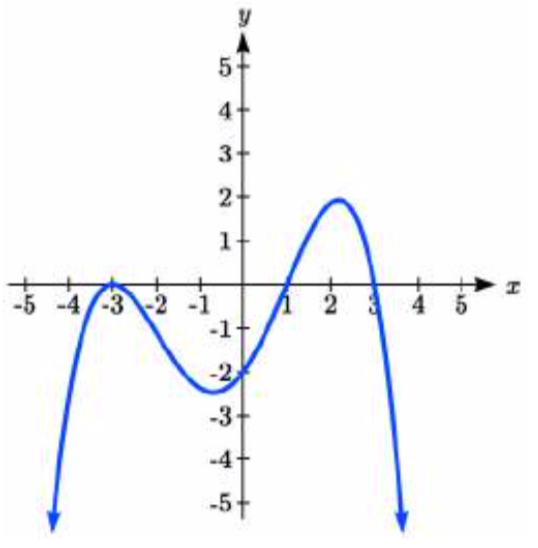
Write a formula for each polynomial function graphed.
45. 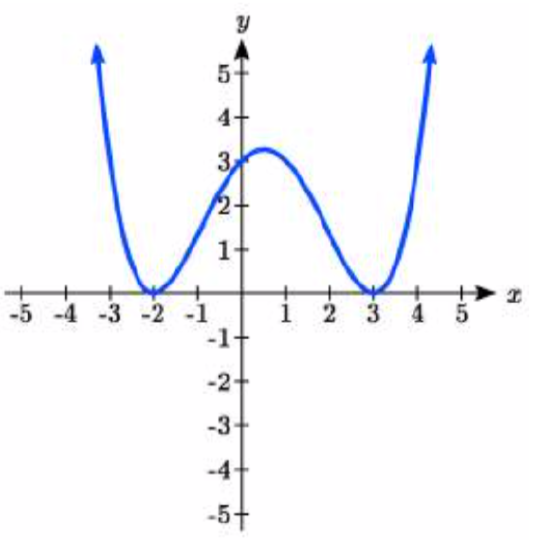 46.
46.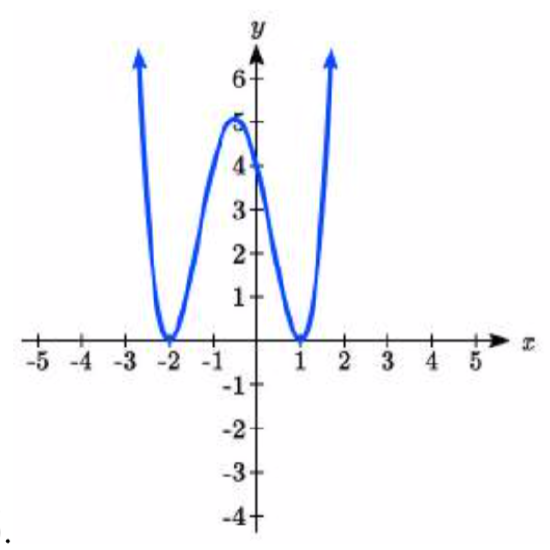
47. 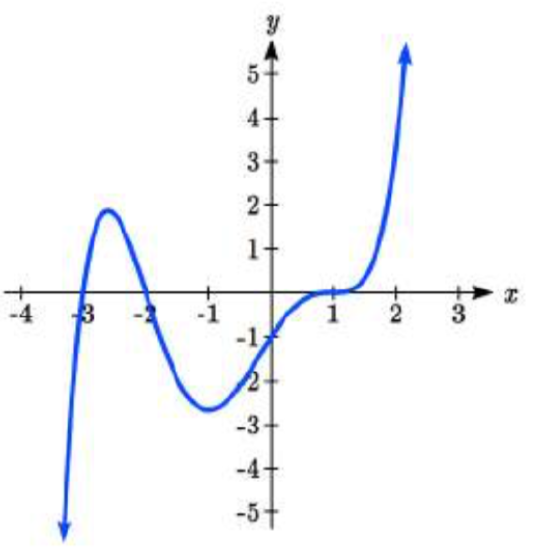 48.
48. 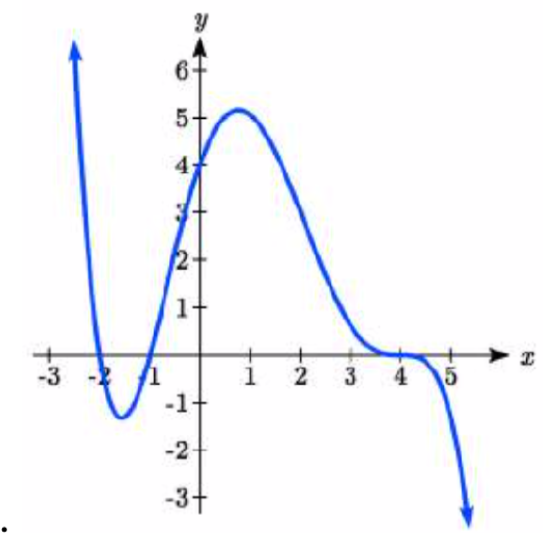
49.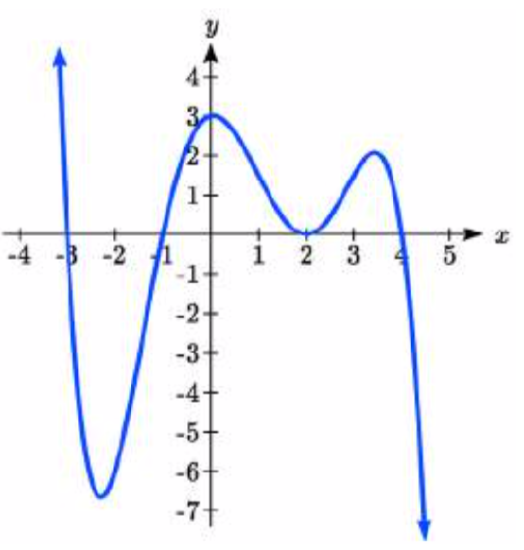 50.
50. 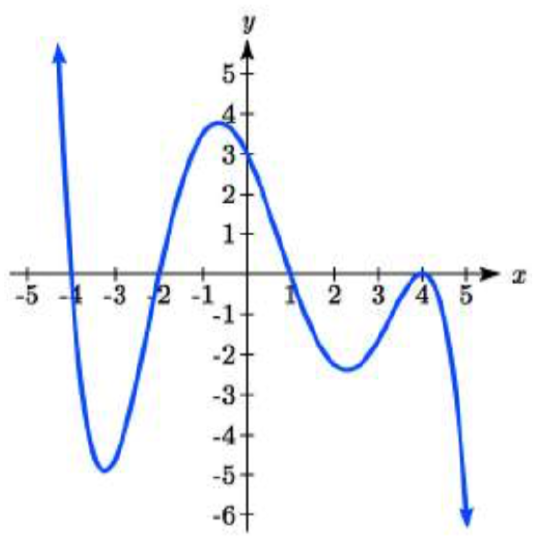
51. A rectangle is inscribed with its base on the x axis and its upper corners on the parabola y=5−x2. What are the dimensions of such a rectangle that has the greatest possible area?
52. A rectangle is inscribed with its base on the x axis and its upper corners on the curve y=16−x4. What are the dimensions of such a rectangle that has the greatest possible area?
- Answer
-
C(t) C, intercepts t, intercepts 1. (0, 48) (4, 0), (-1, 0), (6, 0) 3. (0, 0) (0, 0), (2, 0), (-1, 0) 5. (0, 0) (0, 0), (1, 0), (3, 0) 7. (-1.646, 0) (3.646, 0) (5, 0)
9. As t→∞, h(t)→∞ t→−∞, h(t)→−∞
11. As t→∞, p(t)→−∞ t→−∞, p(t)→−∞
13.
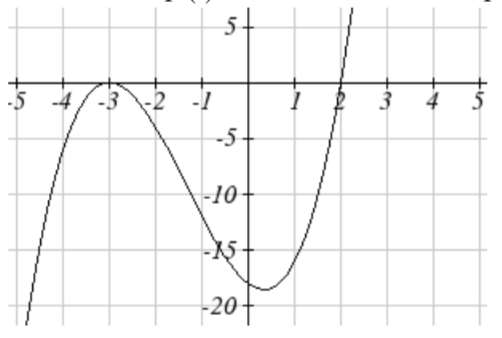
15.
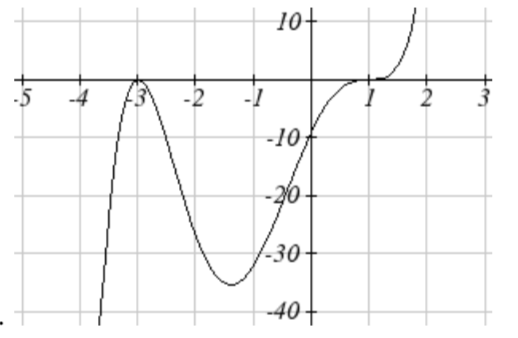
17.
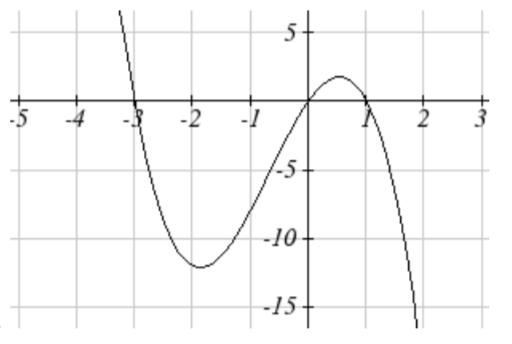
19. (3,∞)
21. (−∞,−2)∪(1,3)
23. [3, 5, 6]
25. (−∞,1]∪[4,∞)
27. [−2,−2]∪[3,∞)
29. (−∞,−4)∪(−4,2)∪(2,∞)
31. y=−23(x+2)(x−1)(x−3)
33. y=13(x−1)2(x−3)2(x+3)
35. y=−15(x−1)2(x−3)2
37. y=12(x+2)(x−1)(x−3)
39. y=−(x+1)2(x−2)
41. y=−124(x+3)(x+2)(x−2)(x−4)
43. y=124(x+4)(x+2)(x−3)2
45. y=112(x+2)2(x−3)2
47. y=16(x+3)(x+2)(x−1)3
49. y=−116(x+3)(x+1)(x−2)2(x−4)
51. Base 2.58, Height 3.336


